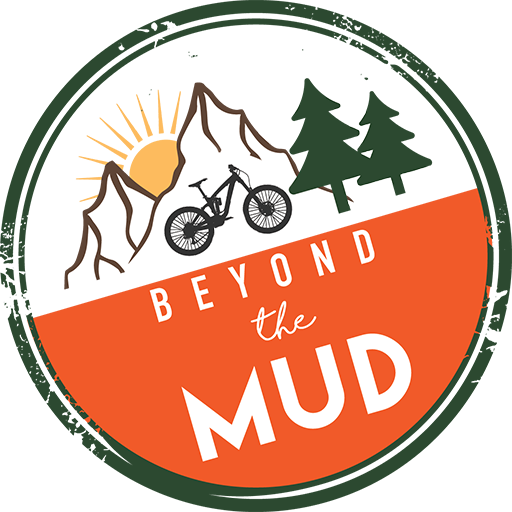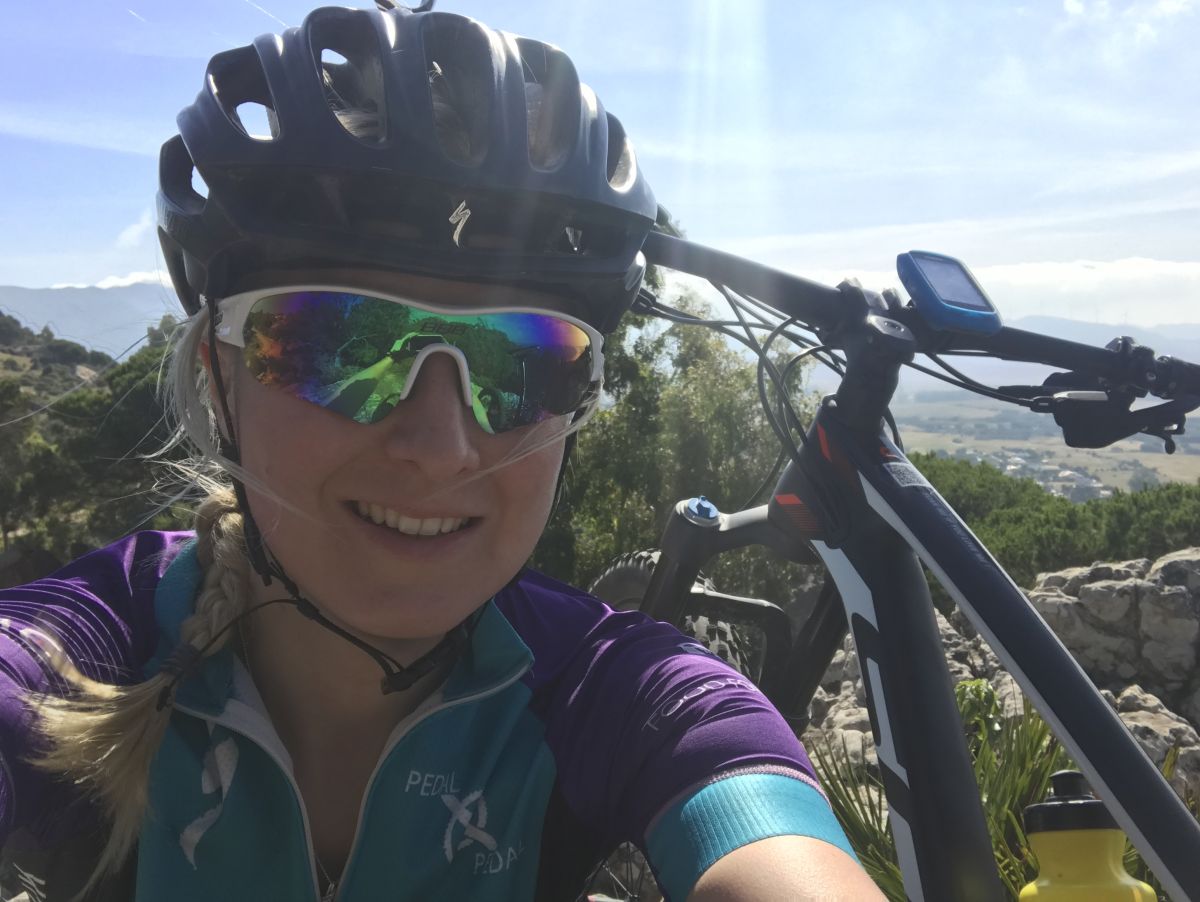
by hattenburrow | Jul 27, 2017 | Biking Adventures, Nutrition, Training
On Saturday I will be racing 24 hours solo in the Pivot 24:12 at Newnham Park in Plymouth.
I am not sure physically or mentally if my body is ready for what I am about to put it through but then again I am not sure you can ever be 100% ready for anything which is demanding mentally and physically all you can be is prepared for all eventualities.
I haven’t really had a chance to think about the race properly until this week when I went to start packing and suddenly felt a wave of excitement/panic about what I have to do.
It will be one of the biggest races I have ever taken part in and as it stands my goal is to just complete it.
I know my body isn’t great with no sleep so my plan is to try and ride as much as I can during the day and then at night every 3 hours take a little break and if I get super tired maybe an hour power nap which hopefully will re-charged the batteries enough to get back on again!
My friend asked, so what do you pack when you’re going to be in the saddle for 24 hours the answer is a lot!

Clothing wise I have a shorts and jersey change for every 6 hours on top of this I have a selection of Grip Grab arm and leg warmers some light weight and some rain proof!
One thing I know from experience is cold feet mean a cold body so I have 7 pairs of socks for over the 24 hours. I will also be taking two pairs of shoes and over shoes just in case!
For my top half I have a hat to go under my helmet and a base layer along with two warm jackets and a waterproof.
Being able to change into dry and comfortable clothes will make the whole situation more bearable. I hope!
Overnight I will be using Hope lights to light up the trail these are good lights and I will be using a head torch as well as a handle bar mount for optimal lighting.
Nutrition:

During the race I will try and eat as much natural food as possible I will supplement this with gels when I need too. My plan is to eat around 60g or carbohydrate an hour which is the equivalent to 1 banana, 1 energy gel and 2 large dates. This is a lot of food but if I eat enough I should be able to maintain my energy levels for the duration.
From experience I will crave savoury foods so hot snacks when I stop will include pot noodles, porridge pots and cheese sandwiches and maybe some ham and olives!
I will be drinking mainly water but have some Vitamin C tablets and Dirolyte as well to keep on top of my electrolyte replacement.
Every new challenge brings a new experience and opportunity to learn something about myself, my ability as a cyclist and to push my body out of its comfort zone.
See you on the other side. x
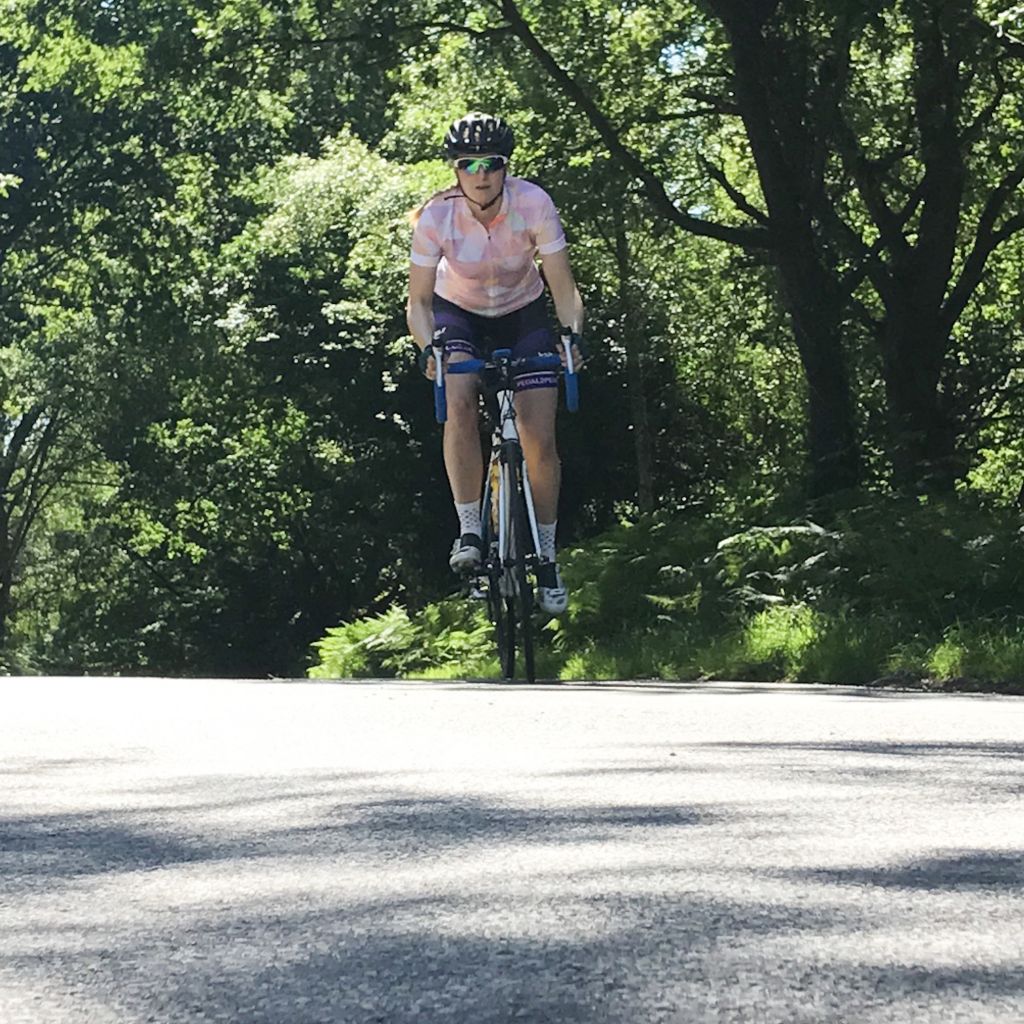
by hattenburrow | Jul 20, 2017 | Coaching, How to
Having spoken to some friends and followers I am going to write cycling tips every other week (I may put in some newbie mountaineering and kitesurfing tips to mix it up a little as well) Follow along my subscribing to my blog (link at bottom of home page). I hope you enjoy, comment with any questions about cycling.
To kick it off here are my top tips for better hill climbing.

Long steady hill climbs can be really tough that feeling like the hill may never end is one I have felt many times before. But don’t fear most hills end, eventually and the reward of the view and a well-earned drink stop from the top can be well worth your achy legs and perspiration on the way up.

Tip one – When reaching the bottom of a climb don’t change down into your lowest gear, not only will your legs be spinning like crazy and you will lose the speed you have gained in the previous flat or downhill but you then have nowhere to go should the climb get steeper or more tricky. Instead if you need to change down one gear lower and work on a basis of when your cadence drops counting to 10 and then changing down, that way you get the most out of each gear change.

Tip two – Breath, as it starts to get harder doesn’t forget to breath, try breathing in and out in time with your pedal strokes in through your nose and out through you mouth if you can. Try not to breath too quickly as this will psyche you out.
Tip three – Look ahead and focus on breaking the hill down into milestones. Once it starts to get hard if the climb in lasting over 10/15 minutes break it down into manageable chunks and see every chunk as a mini goal that way you don’t think of the climb as one mega beast but several small beasts joined together, much more manageable!
Tip four – To stretch out your back and also work other muscles, if the hill is not too steep stand up on the pedals for sections of the climb this will allow you to put more power through the pedals. If the surface is loose don’t stand up as your weight on the back wheel will spin/slip out.
Tip five – Steady cadence, try and keep your pedals going round at a smooth & consistent pace. If you feeling like your pushing really hard on your pedals go down a gear or two, likewise if you feel your feet are spinning then you can probably go up a gear.
So these are my five top tips to improve your hill climbing if you would like more tips and coaching please get in touch.

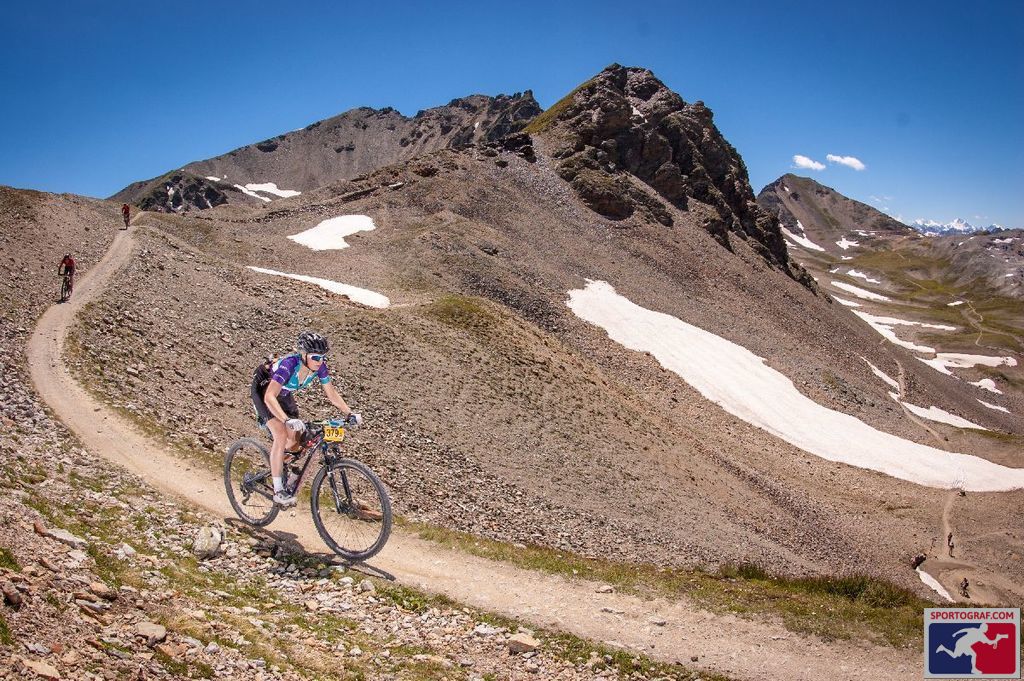
by hattenburrow | Jul 14, 2017 | Adventure, Biking Adventures
Last year I took on my biggest challenge yet. The Trans Alp Bike Race, the toughest amateur Mountain Bike stage race in Europe.
My team mate Michelle and I spent seven days doing battle up mountain passes, riding through valley floors and dropping down breath-taking descents as we crossed from Austria to Italy. We passed through 3 countries, climbed over 17,000mts, (which equates to climbing Mount Everest twice) and rode 521km.

Albeit spectacular, The Trans Alp was far tougher than I imagined both mentally and physically. No training in the UK can prepare you for exhausting 2,000m climbs. As a team we burnt around 70,000 calories, went through 4 sets of brake pads, ate mountains of bananas and watermelon, consumed 36 energy gels from High 5 and SIS, drank around 4.5L a day and spent 44 hours in the saddle.

The months after the Trans Alp took me by surprise I was the fittest I had ever been but my motivation to train or even ride my bike seemed to have gone. I felt like something was missing from my life and I felt drained on enthusiasm.
I pulled out of Torq 12:12 as once by body started to relax out of training I started to get ill with colds. This was my only goal after the Alps now I started to feel like I had failed.
I felt unhappy with the way I felt and constantly beat myself up about how I was feeling but nothing seemed to pull me out of the black whole I had fallen into.
Having an operation in November and six weeks off exercise didn’t help my mood and stress levels. Finally around Christmas my boyfriend Martyn had the genius idea of climbing Mont Blanc for our 30th Birthdays in 2017. This was the first push I needed to get back to feeling inspired and motivated towards a new goal and new challenges.
Since finishing the Trans Alp I found the Tough Girl podcast which also has helped! I listened to inspiring women who had been on epic adventures and had come back and felt exactly like I did. Phew! This normalized the way I had felt and helped me to move past these feelings and look to the future.
So, what does it feel like to race a stage race?
I can’t quite put it into a sentence the mental and physical strain on training six days a week around running your own business and working full time, it was immense and I am in complete awe of everyone who puts themselves through this, I salute you! The Trans Alp changed my life, it gave me a new perception on hard work, team work and the dedication needed to be at the top of your game when it counts.
Since getting over my little post-race blip I feel more determined to make the most out of life and the adventures it throws at me. I am now focused on building my coaching business and starting to work with more women to help them achieve their cycling goals.
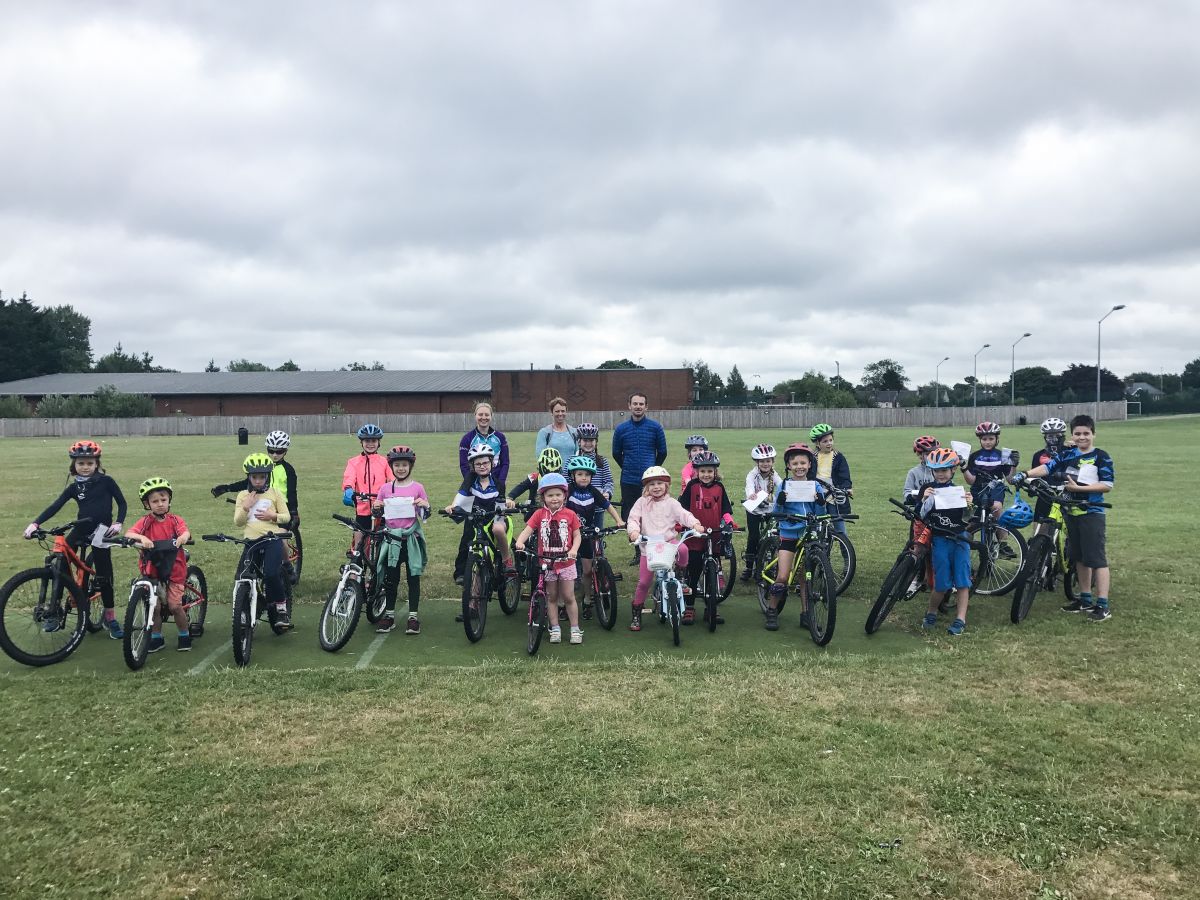
by hattenburrow | Jul 5, 2017 | Coaching
Four years ago I started Pedal 2 Pedal to help the next generation of mountain bikers have access to coaching in my local area, Petersfield. There was no cycling club within about 40 minutes of Petersfield and I wanted to help give back to the sport which had given me so much. So after doing my coaching qualifications Pedal 2 Pedal was born. I advertised in local schools in the Hampshire area and soon enough had my first six week cycling course off the ground.

Four years on and the club has expanded to a mountain bike academy of 20 riders and in 2017 a new Saturday club which aims to give young people the opportunity to get into cycling whatever their age or ability.
The Saturday club sessions have run once a month with the help of two parents who have done their coaching qualifications, some Saturday’s between the three of us there has been 27 children aged between 4 and 10. The first round of Saturday’s has just finished and the feedback has been fantastic. New dates available now.
My aim is to build the Saturday cycling club so that it can be sustainable and help more young riders get into and try cycle sport. With the aim of becoming a Go Ride cycling club once the structure and support is in place.

One parent said: “Sam has attended the Saturday camps Hannah has set up at Petersfield School. They have been well organised and are teaching him basic skills in a safe and fun environment. He has loved every moment of the classes and it’s been great to see him grow in confidence on his bike and apply what he has learnt when cycling elsewhere.”
Cycling is a great sport for young people as its non-weight bearing and helps get kids outdoors and active.
Some of the general benefits provided by cycling are:
- It helps kids understand their local environment and feel part of it sustaining and looking after the area in which they live
- It helps build independence
- It develops muscle strength
- It has also been reported by many teachers that kids who walk or cycle to school are more alert and ready to learn than those arriving by car
- A good healthy habit that lasts a lifetime
- Cyclists breathe in less pollution from traffic as compared to car drivers
- Being part of a team and learning good social skills with other people
I hope my cycle coaching can go on to encourage more young riders on to their bikes. My next goal run some women’s cycling sessions both on and off-road. Message me if you’re interested
Thanks for reading x
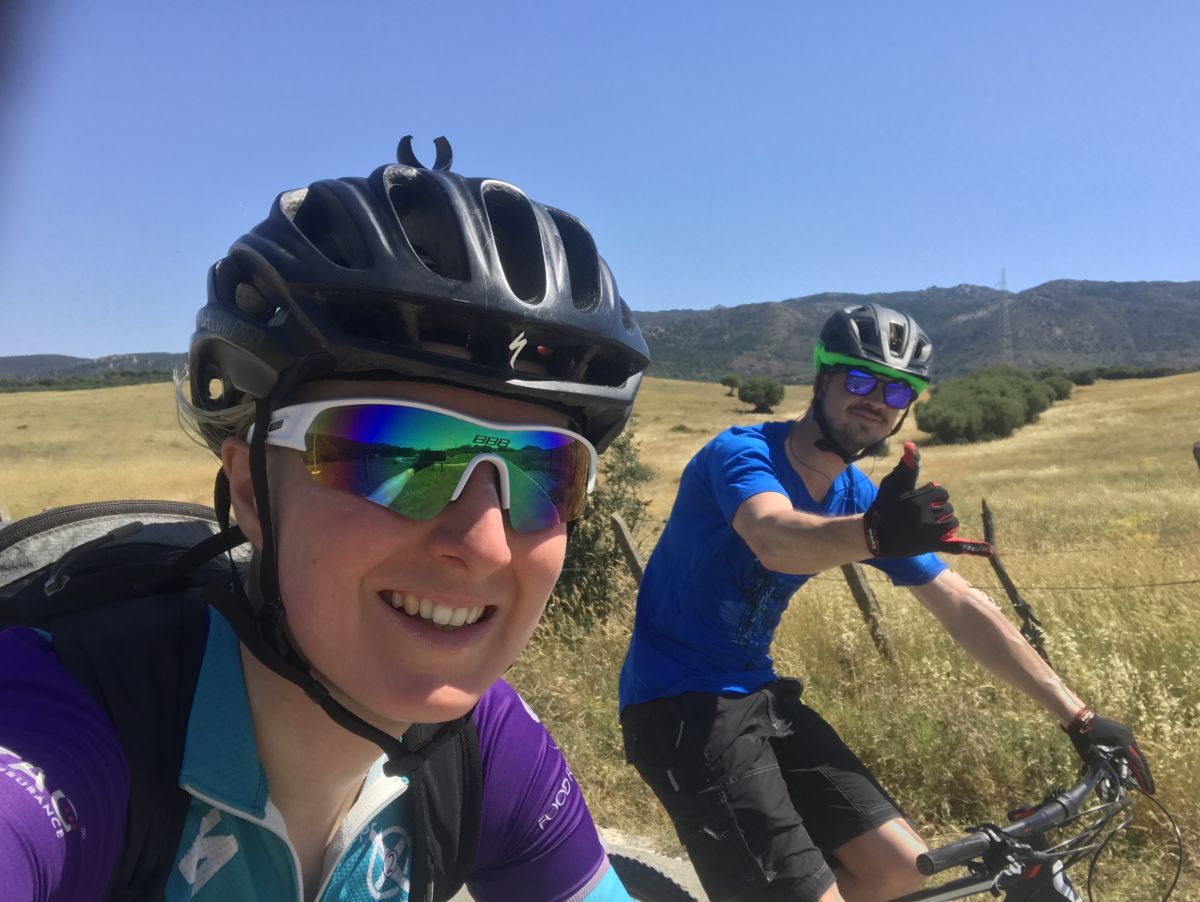
by hattenburrow | Jun 22, 2017 | Adventure, Biking Adventures, Hotel Reviews, Kitesurfing
Tarifa sits at the Southernmost tip of Spain, where the Mediterranean sea meets the Atlantic ocean. It smiles at Morocco across the Gibraltar Straight which splits Europe from North Africa. With its long sandy beaches and rolling countryside Tarifa is an adventurer’s paradise with plentiful opportunities to have fun in and out of the water.

The town of Tarifa is a quaint fishing port with narrow cobbled streets. Tumbling jasmine and beautiful wrought-iron rejas make Tarifa old town a charming place for a stroll and a great place to stumble into one of its many Tapas bars for a delicious bite to eat.
The ‘new town’ in Tarifa adds a different element to this laid back fishing town with is rows of surf shops, bike rental places and an international vibe.
Where to stay.
For our trip we stayed at the Ocean Nature Lodge about 6km from Tarifa town. The hotel sits back from the road with views over the beach and mountains.

Stepping into the main hotel building it had a fresh, laid back vibe and we felt instantly at home. The hotel had a restaurant which served breakfast, lunch and dinner. A bar which was open all day serving hot and cold drinks, the fresh orange juice was my favourite. During our stay Martyn and I spent time drinking and playing games on the veranda at the front of the hotel overlooking the sea.
The hotel complex included self-contained ‘bungalows’ which looked like great places for groups of friends or couples wanting more privacy.
There was also a nice pool, gym (which wasn’t open when we were there), on site bike hire with Scott Bikes and kite school making it easy to rent gear or have lessons.
The staff where so helpful, they made us feel like friends rather than guests, and they were very patient as we practised our broken Spanish each day.
Our Room.
Our room overlooked the sea. On more than one occasion I found myself sitting on the bed staring out at the palms blowing in the gusty wind and watching the colourful kites dance on the water below.

The room followed the chilled out beach vibe with open wardrobe, roller door and white washed wood a plenty.
The room was a reasonable size with a balcony, nice comfy double bed and amazing waterfall shower in the wet room.
Restaurant.
Breakfast was not included in our room price and cost 12 euros a day but was well worth it. A fresh selection of pastries, croissants, hams, cheeses and fruit. You could also have cooked eggs with bacon or omelettes cooked to order each morning. This was a nutritious way to start an action packed day exploring the nature reserves or playing on the water.
Lunch was simple but delicious; with a small menu selection of salad, sandwiches and mini burgers all the food was well cooked and prepared to a high standard.

Evening meals were a real treat. The menu was small but the choices were cooked to perfection. I had the tuna, caught using the Almadraba method a style of fishing using a circle of boats and nets, a practice which has not changed since the Phoenician times, over 2000 years ago. It was cooked pink and served with an variety of vegetables and new potatoes, as requested by me.
Martyn had the pork cheeks which were melt-in-your mouth tender and came with a butternut squash and greens.
Puddings were also incredible my favourite was a melting ball of cocoa which uncovered a rich chocolate, orange and nut cake with a rich dark chocolate sauce and candied fruits it was the perfect end to any meal.
Scott Test Centre – Mountain Biking Tarifa

Ocean lodge is a Scott bike test centre with a fleet of bikes including, road, mountain and e-bikes to try out in the stunning countryside.
We chose to hire Scott Spark mountain bikes which were super light and great fun! Our ride started early to avoid the mid-day sun. The ride started, as every good mountain bike ride should, with a climb.

We traversed the side of the hill until we reached the top, the winding gravel surface kicked up dust in the balmy heat of the morning and we were soon stopping to admire the view and catch our breath. We had hired a guide to explore the 600 kilometre National Park, which turned out to be a sensible idea as off-road it was a rabbit warren of trails and paths and knowing where the best single track was required local knowledge.
The advantage with going high was being able to make the most of the stunning views out across the Atlantic with Morocco a hazy shadow in the background.

Our route was around 25km in total and the perfect way to enjoy the single track Tarifa has to offer. I would love to go back and do more biking soon.
Tips for biking in Tarifa:

- Go with a guide or use Bike Map to download routes so you don’t get too lost
- Know where you can get water from if you go alone
- Early mornings or evenings tend to be cooler
- Sun cream is a must
- Pump your tyres a little harder for the climbs and then let a little out for the descents
- E-bikes are a great way to enjoy the countryside without so much effort on the climbs

Kitesurfing Tarifa

I had lessons with Kite Force Kiteschool who are linked to the hotel. It was super easy to book my lessons via email and on arrival we worked out the ideal times due to wind and conditions. A friendly instructor met me at the hotel and took me to the beach for each lesson. To read about my kite surfing lessons click here.



